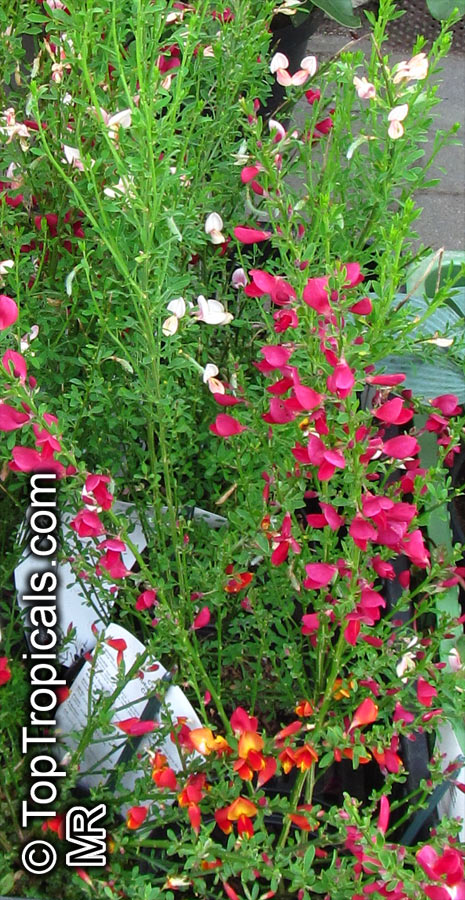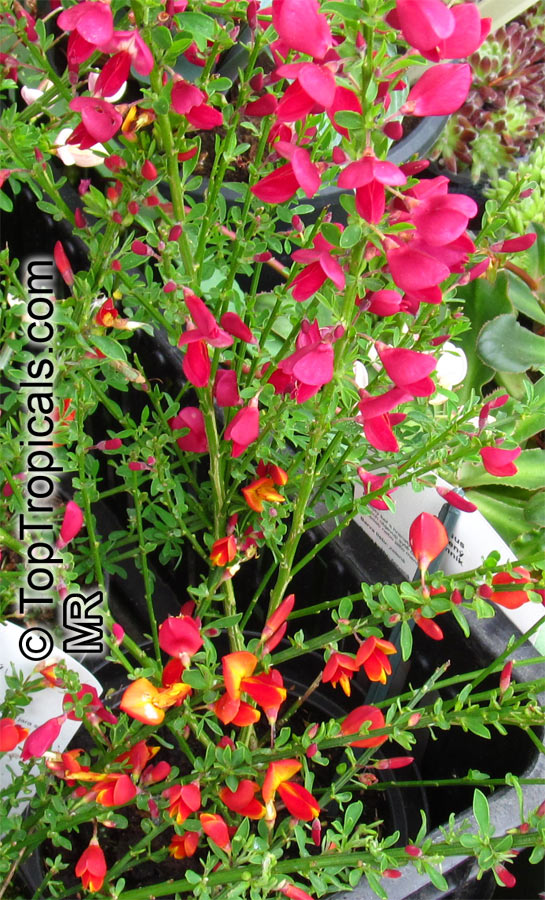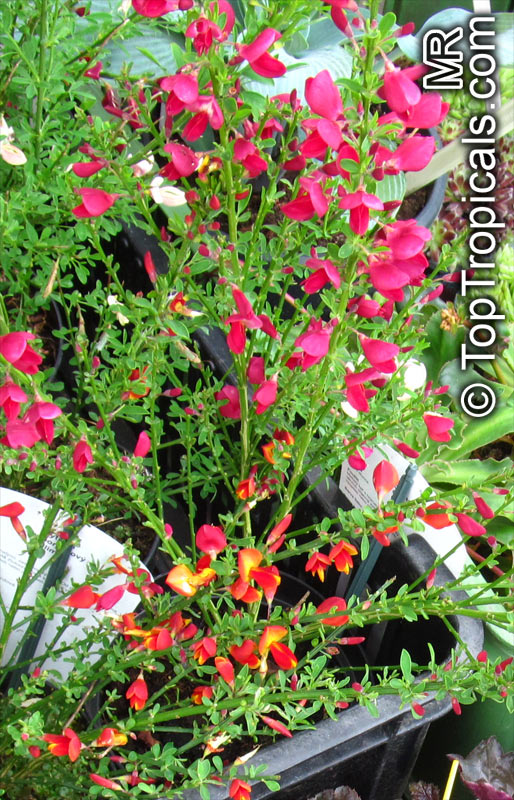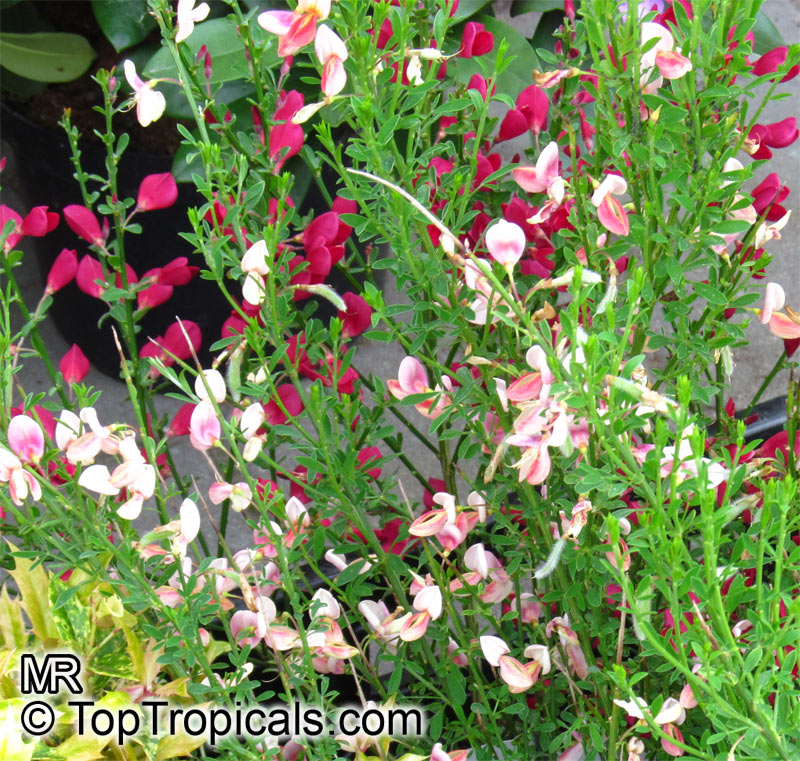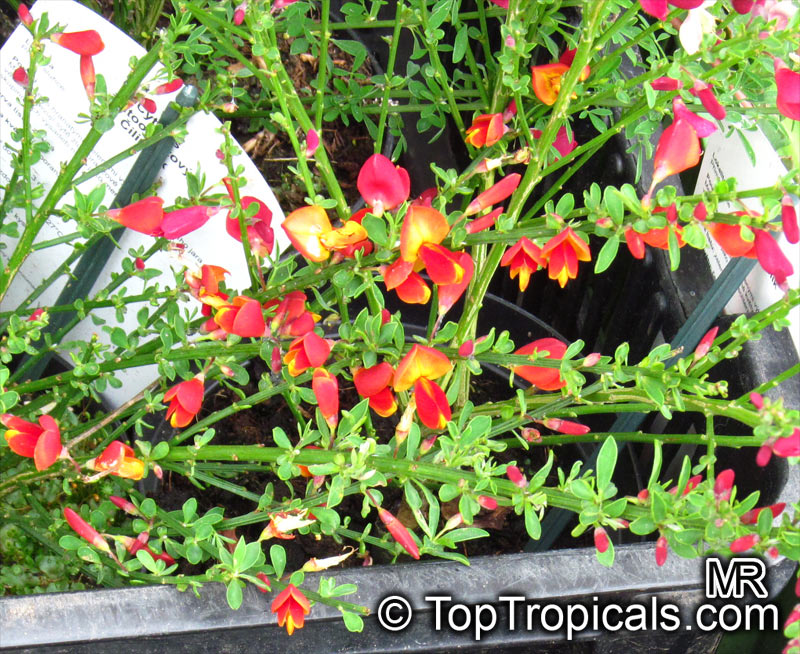Cytisus sp. (Broom)
Top Tropicals Plant Encyclopedia
Botanical name: Cytisus sp.
Common name: Broom
Family: Fabaceae
Subfamily: Faboideae
Origin: Europe












Low-growing, generally 2ft tall, Cytisus sp. rarely produces seed so it won't become a nuisance. It is a deciduous plant, meaning its branches will shed their leaves in the winter months, but by spring the plant will be covered in glossy green foliage. When the weather heats up, Cytisus sp. will be in full bloom with long clusters of small pea-like flowers in shades of pink, white, off-white, red, crimson, yellow, and orange.
These bright blooms will attract butterflies and hummingbirds, making Cytisus sp. an ideal ornamental choice. Regular watering is recommended, and while it will tolerate some shade, the plant will really thrive with full sun exposure. Some species may even tolerate cool climates, as illustrated by its USDA Zone: rating of 5-8.
To properly care for Cytisus sp., a gardener should start by providing the plant with well draining soil. This can be accomplished by adding organic matter such as compost, mulch or manure into the potting soil. Additionally, the plant should be watered regularly but allowed to dry out in between waterings. Plant Cytisus sp. in a sunny spot for best results and be sure to prune the branches back at least once a year to promote new growth. With proper care and maintenance, Cytisus sp. will make a stunning addition to any garden.
